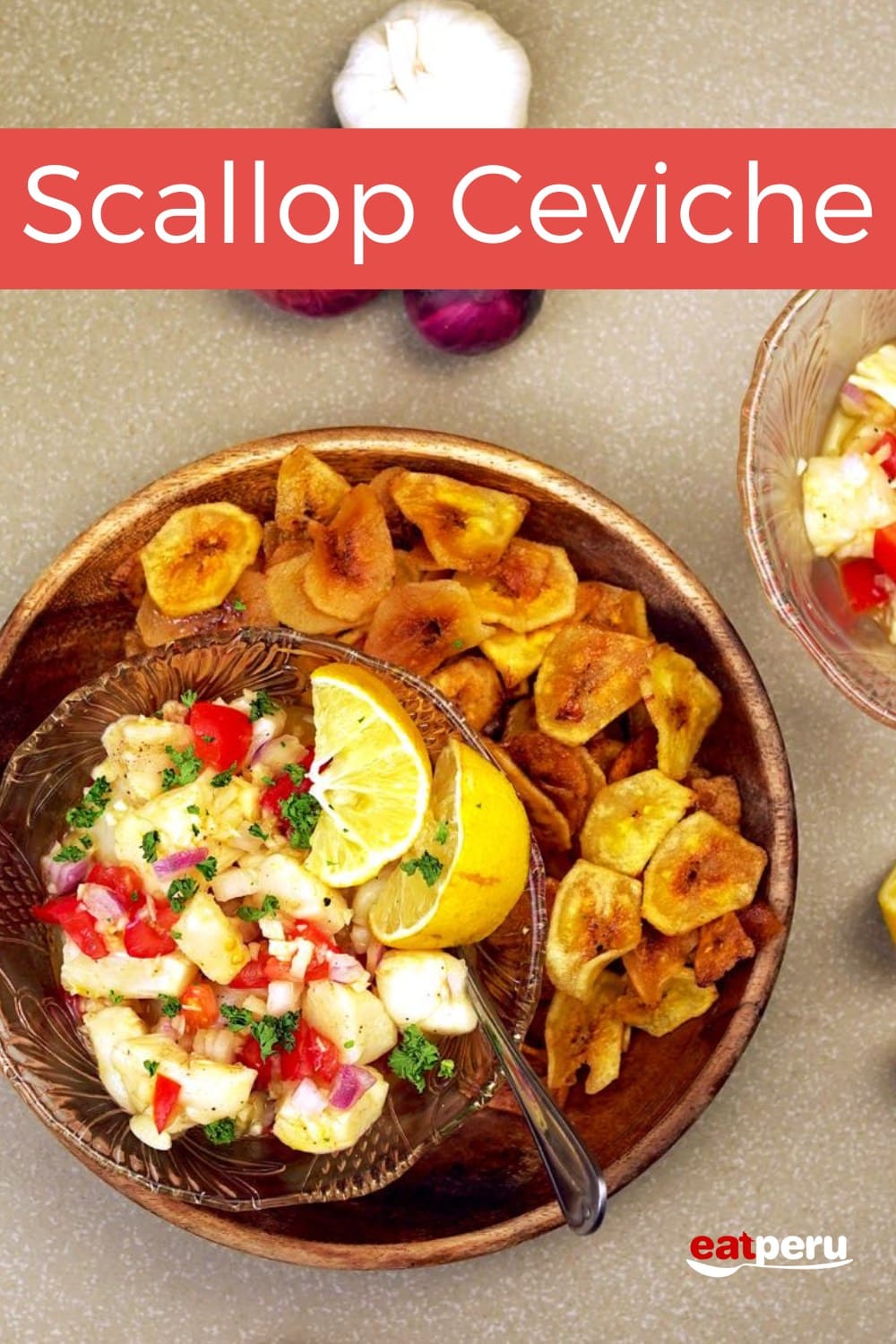It’s not an understatement to say that ceviche is an important part of Peruvian cuisine. Often seen as the national dish and carrying on a tradition started some 2000 years ago, preparing ceviche is a rite of passage for chefs and home cooks in Peru.
The basic dish consists of raw fish denatured by citrus. It’s customizable and adaptable. And there are no rules as to how you prepare it. I prefer to make ceviche to fit the taste preferences of my dinner guests. I also base the preparation on the availability of ingredients, or affordability, as do many Peruvians.
Ceviche is typically prepared with raw fish like salmon, flounder, sea bass, but it can also be prepared with seafoods like scallops, clams, or shrimp. The dish is a showcase for the country’s seafood riches. Today we’ll explore a particularly tasty variation, the scallop version (called ceviche de vieiras in Spanish).
If you’ve already tried white fish, shrimp, or salmon ceviche, this dish should be next on your list. I love the simplicity and elegance of scallop ceviche. It’s easy to make and it’s an excellent way to showcase fresh seafood. You can serve it as an appetizer or a light lunch with some crusty bread, Peruvian corn, quinoa, or rice.
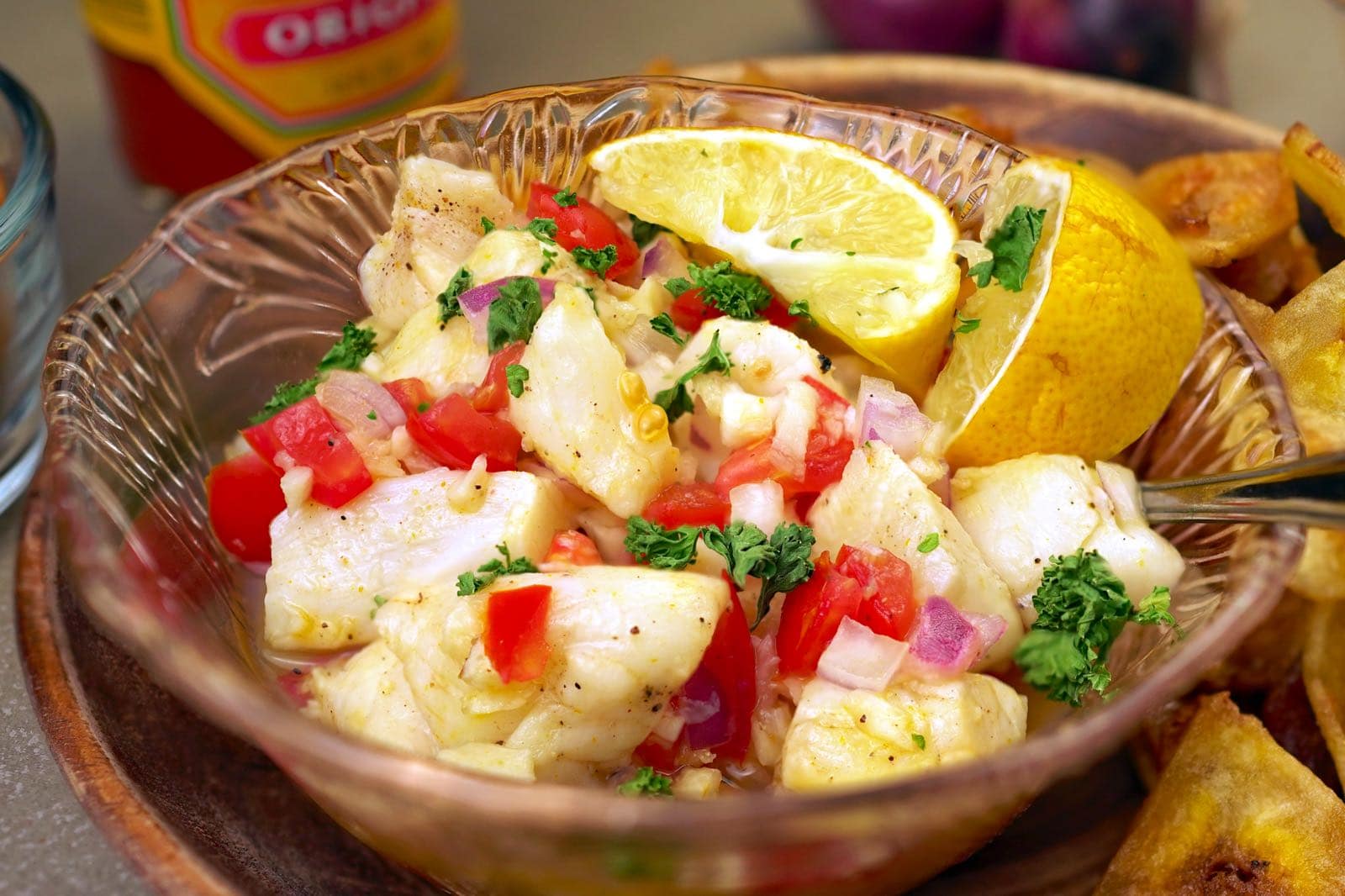
You can use tomatoes, onions, peppers, parsley, cilantro, sweet potatoes, and many other different vegetables or fruits, but we’re going to keep things simple and use red onion, garlic, tomatoes, chilli pepper, pineapple, and limes. As well as, of course, the freshest scallops you can find.
While ceviche is known as a ‘raw fish’ dish or salad, as in all other variations the protein is not exactly raw. We use citrus to cook the cubed scallops in acidic juice. You can use lemon, but I prefer fresh lime juice as this is more true to Peruvian cooking and food culture.
Using acidic liquids to marinate fresh sea scallops for a few hours will cause the seafood’s color and texture to change, making it softer and more vibrant. The acid also imparts unique flavors into the dish.
Ceviches are typically ‘cooked’ in the fridge for only a few minutes or a few hours. This keeps the raw seafood moist and tender (and avoids a rubbery texture). And it’s best to eat your delicious ceviche scallops the same day.
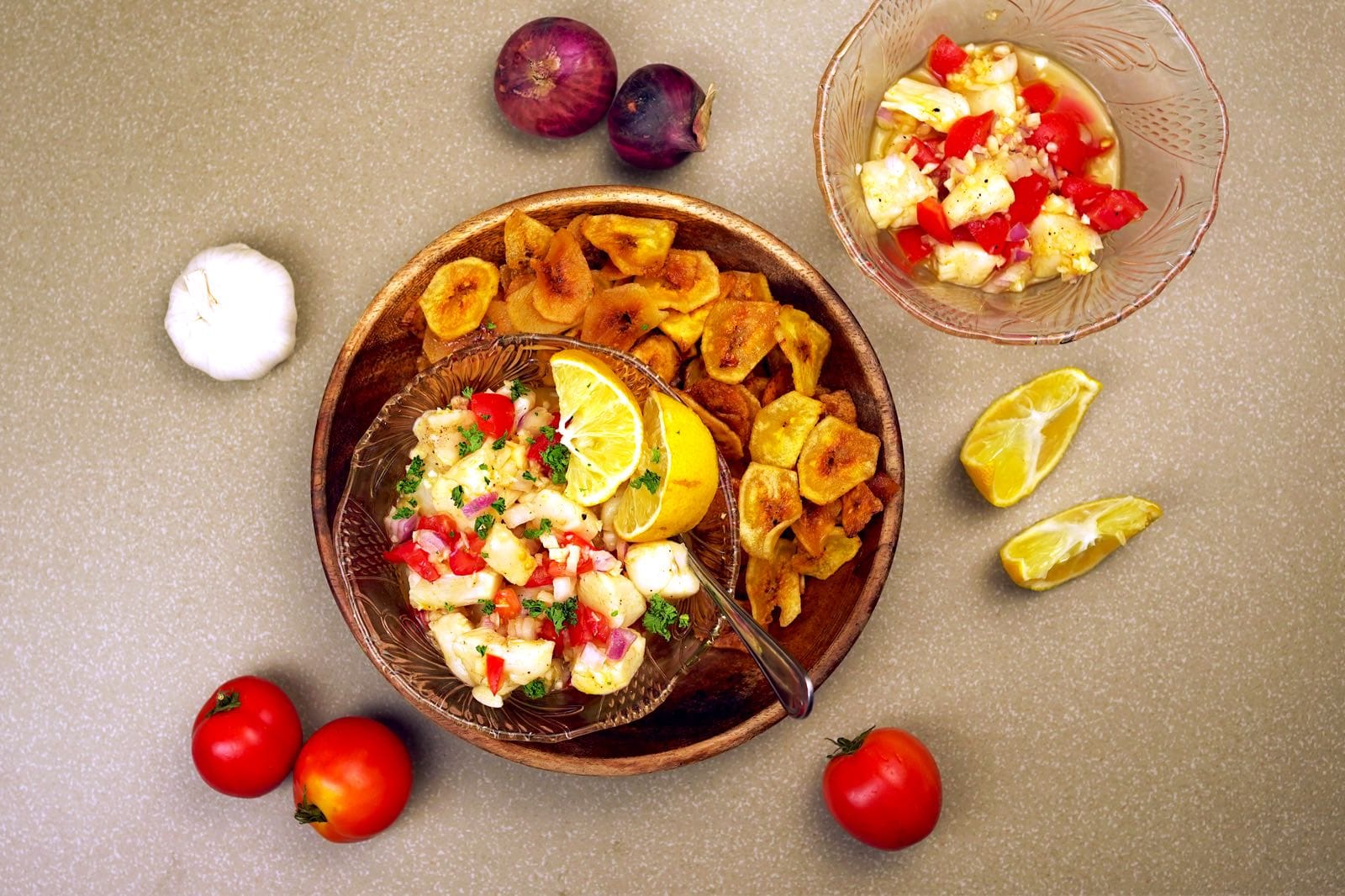
This delicate dish has a harmonious blend of fresh, sweet spicy flavors and is great during hot summers as a quick, fresh snack or easy-to-do appetizer. It has a balance of lightness and flavor, and thanks to the vivid colors and contrasts, it looks spectacular as well.
Alternatives & substitutions
- If you cannot find fresh scallops, you can also use frozen scallops, just make sure to thaw properly and strain out most of the water. Clams (only the flesh), fresh or frozen and thawed, are another alternative. Shrimp ceviche is also very popular, but the shrimps needs to be cooked first.
- For a vegan alternative, try using king oyster mushrooms. These can be eaten raw—but for the most delicious results, it’s best to stir-fry or steam them first and remove their natural bitterness.
- Aji amarillo has a fruity, peppery taste with medium heat (similar to serrano pepper or jalapeño). It’s another important ingredient in Peruvian cooking and can be difficult to substitute. However, some people replace it with aji panca (sweeter and smokey) or chopped jalapenos.
The ingredients list
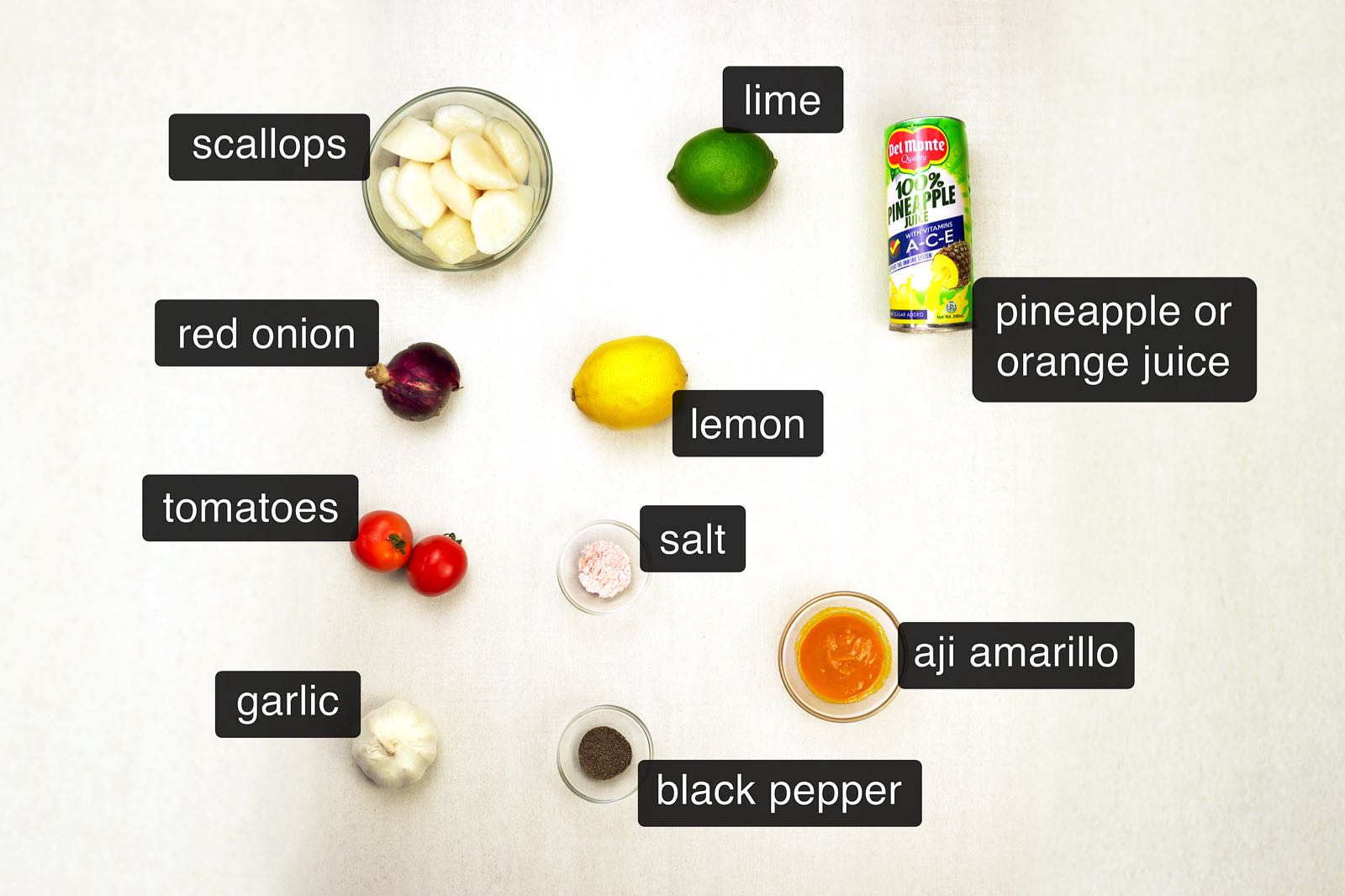
- Scallop – the main ingredient, use bay scallops or sea scallops
- Red onion and garlic – adds color and minimizes fishy odors.
- Tomatoes – adds color and savory richness.
- Aji amarillo – gives a slight peppery taste, can be replaced with red and/or green chillies.
- Pineapple or orange juice – adds sweetness and tartness.
- Lemon and lime juice – cooks the scallop using its acidity. It also helps keep it tasting fresh.
- Salt and pepper – to taste
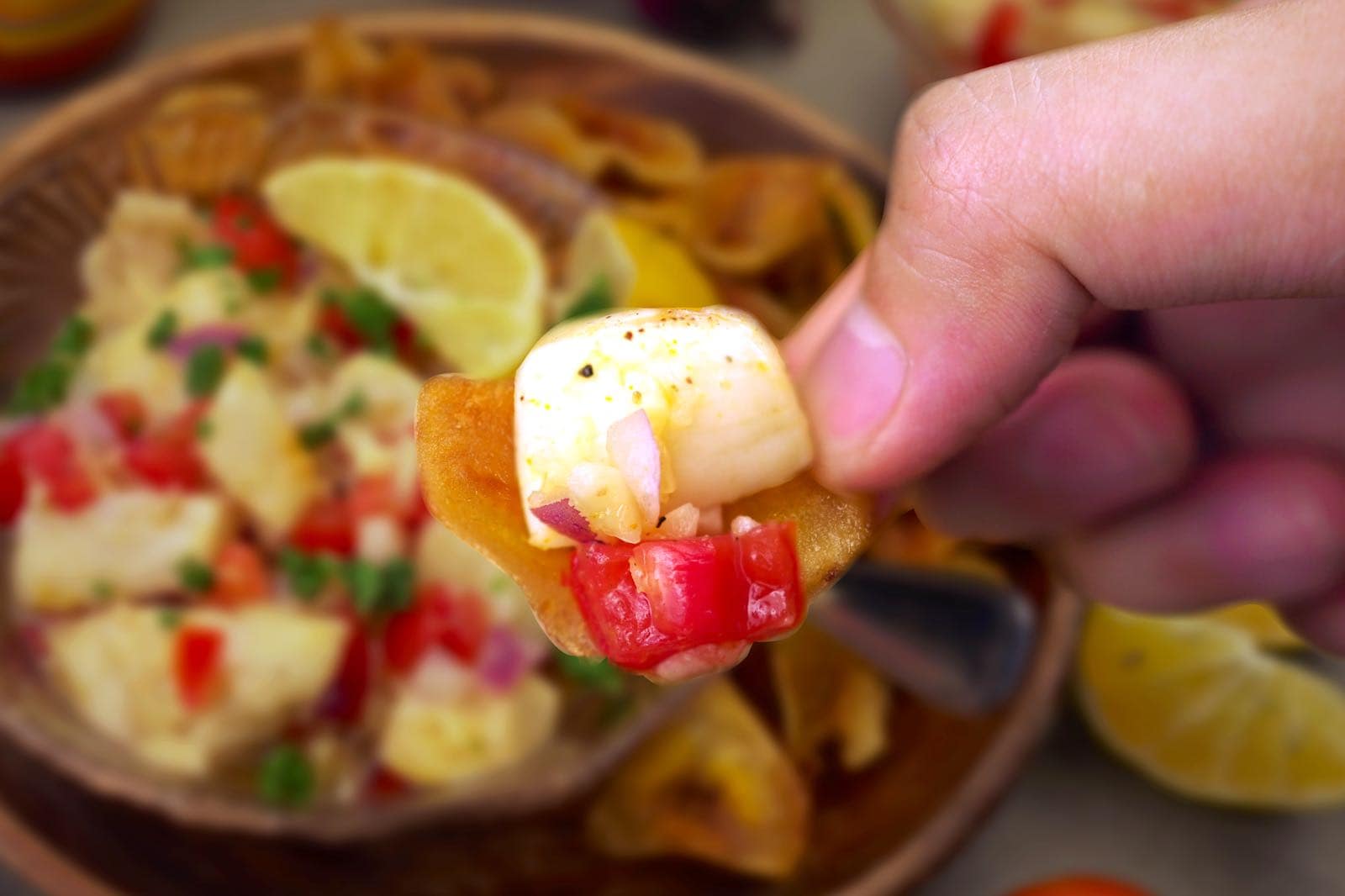
Quick tips
- If using fresh scallops, marinate for only 30–60 minutes to avoid a mushy or rubbery texture. Let the acidity of the lime juice cook them just until opaque.
- To preserve the texture of both vegetables and scallops, remove from their serving container with a slotted spoon and remove the liquid. The liquid is called ‘leche de tigre’ and is sometimes used as a drink, so it’s worth keeping aside in case you like the taste of this tangy and tart, slightly spicy drink.
Step by step photos
Step 1: Slice your scallops into convenient bite-sized chunks. Sprinkle salt and pepper over them, then put it to one side.
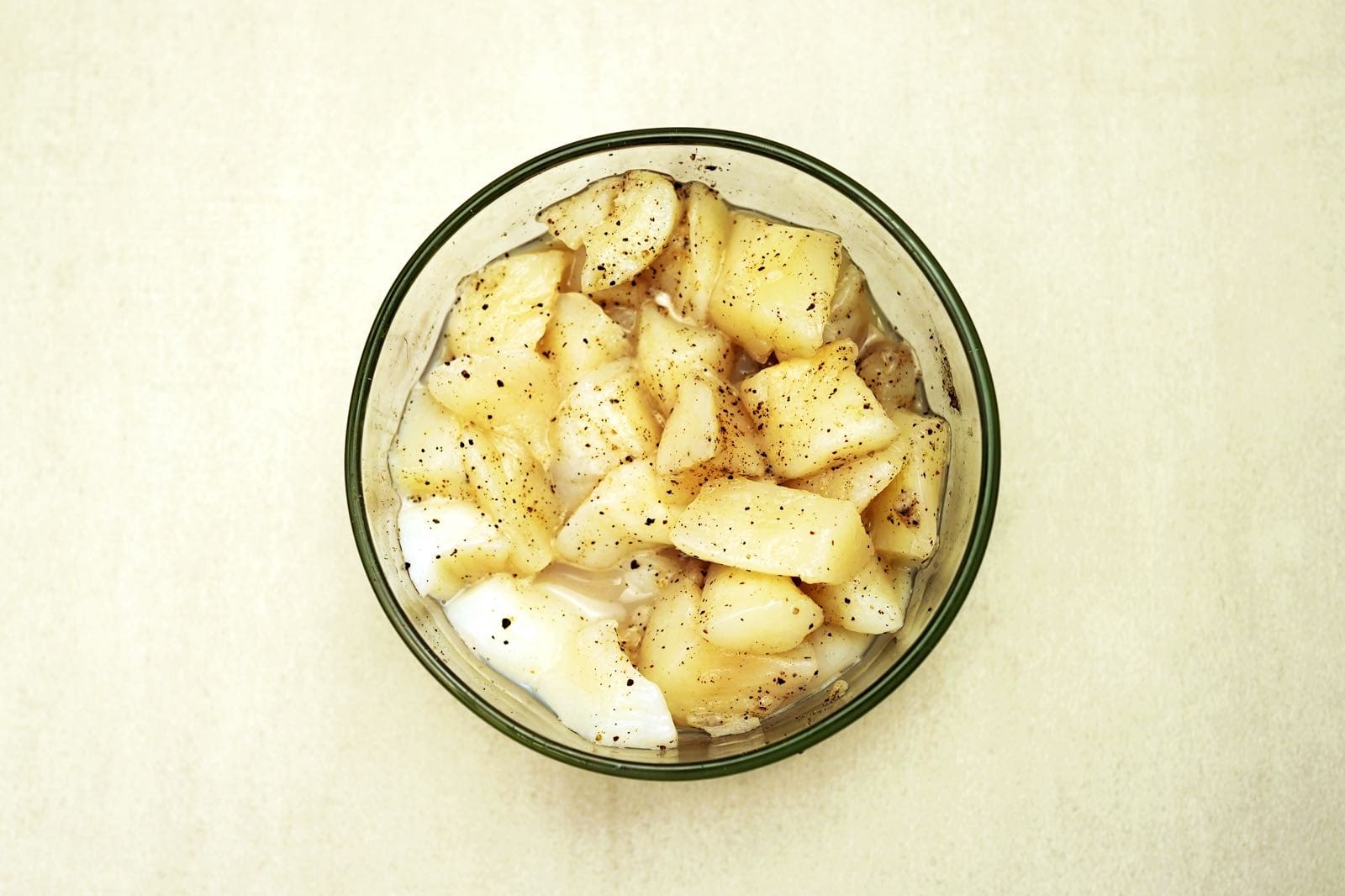
Step 2: Prepare your sauce by merging the aji amarillo, your chosen fruit juice – pineapple or orange, and the lime juice.
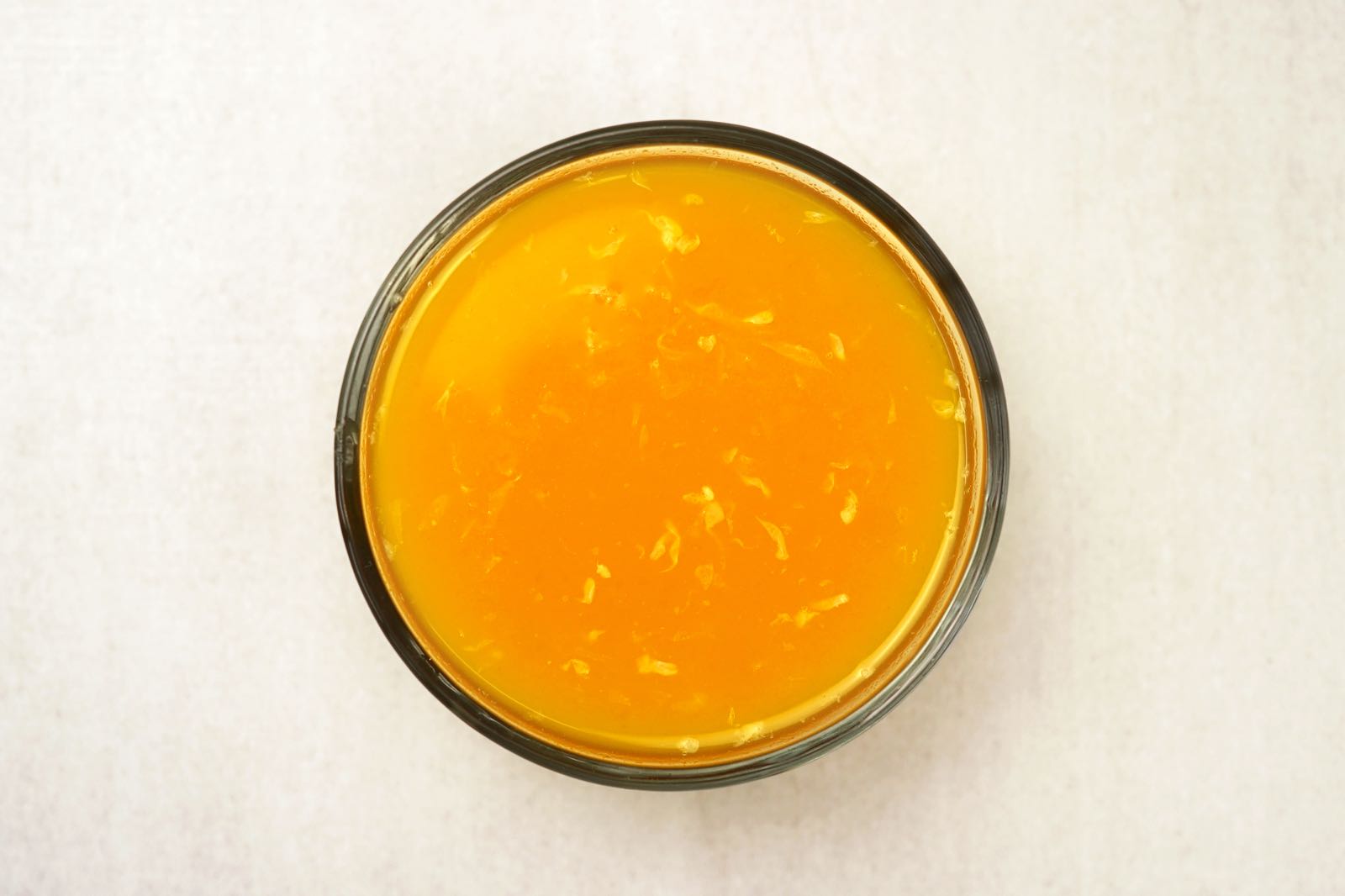
Step 3: Toss roughly chopped or minced red onion, tomatoes, and garlic in a bowl
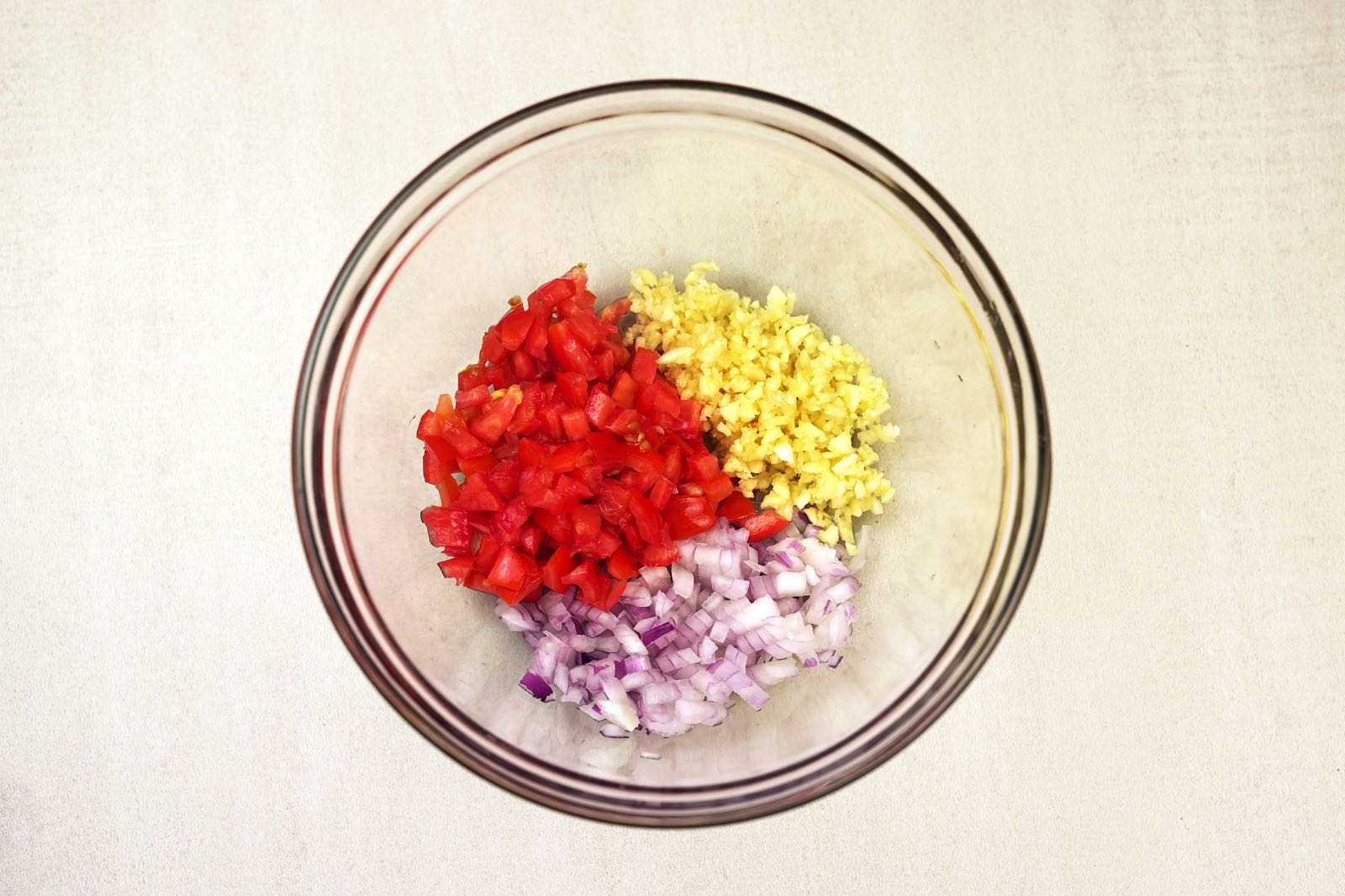
Step 4: Introduce the seasoned scallops and the just-prepared sauce to your bowl. Ensure every scallop is covered the sauce. Leave to chill in the refrigerator for half and hour to two hours if you’re using fresh scallops.
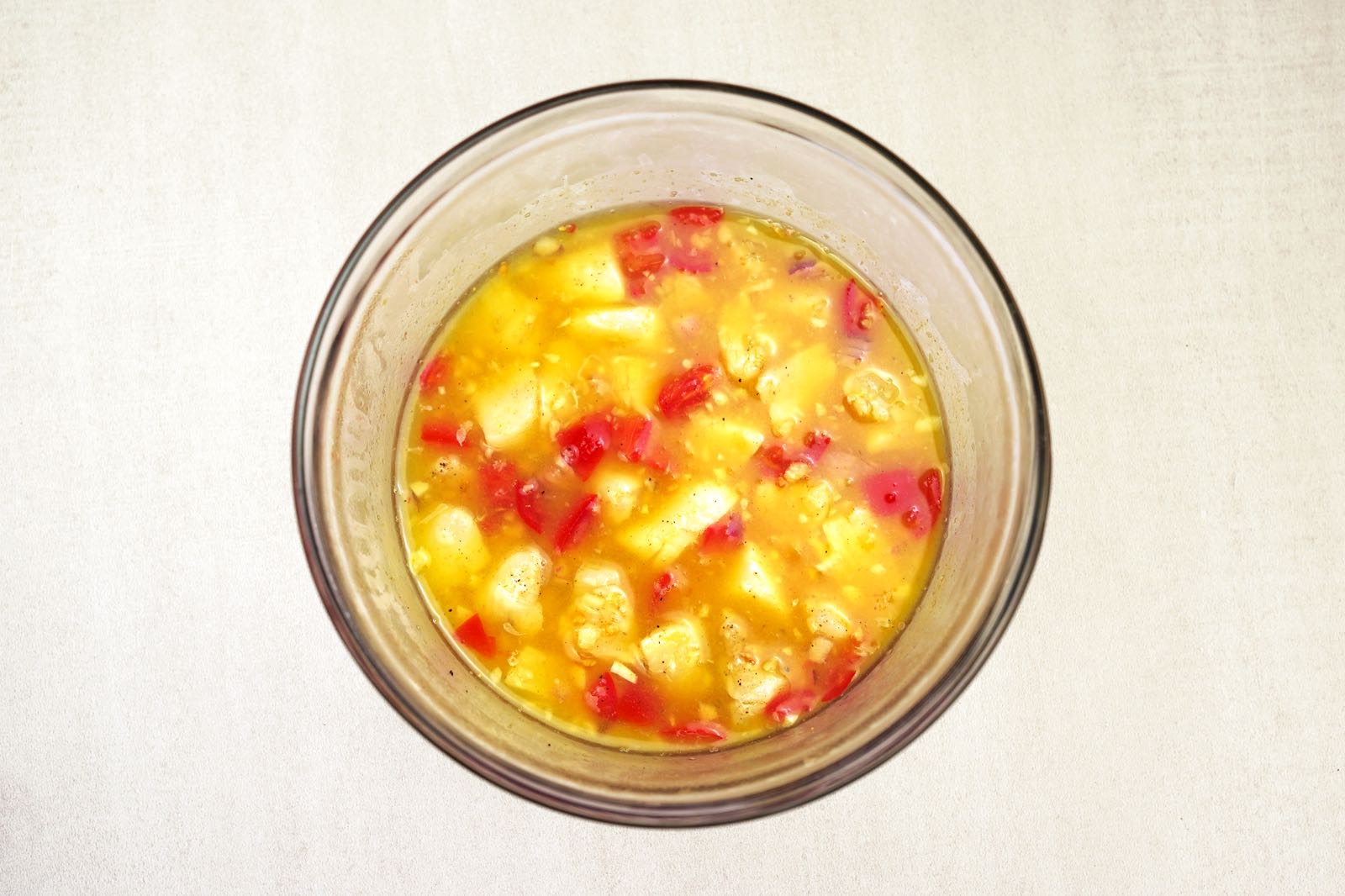
Step 5: Do a taste check. If required, sprinkle some more salt and pepper. Before you serve, drain off the liquid, adorn your dish with parsley or cilantro, and pair it with a side dish to your liking.
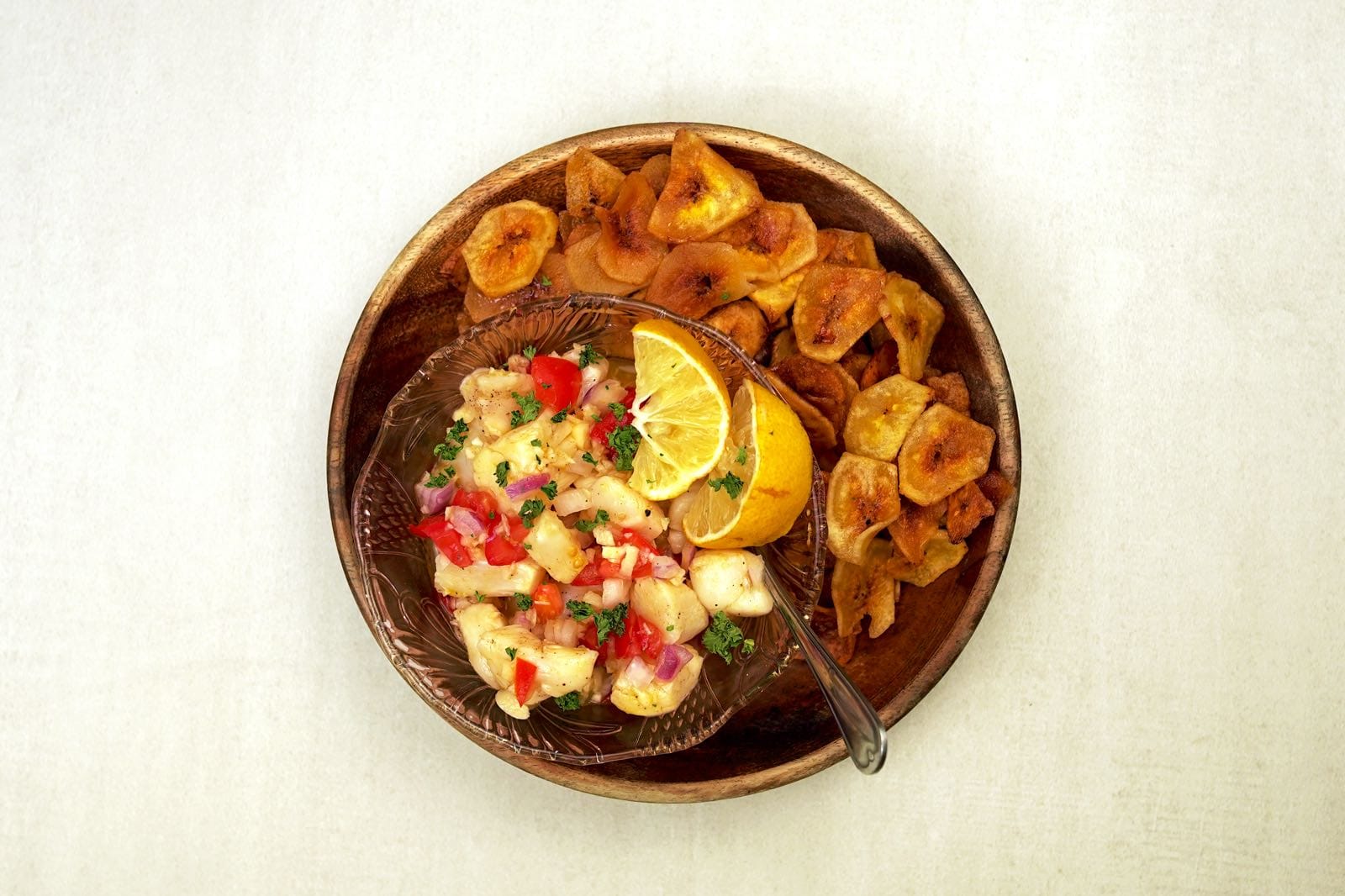
Frequently Asked Questions
Is scallop ceviche gluten-free?
This is a gluten-free dish. All the ingredients are freshly prepared and as we’re not using any packet or pre-made sauces, there’s little risk of gluten contamination.
Can I add other ingredients?
Add any ingredient you like, but I recommend cucumbers, zucchinis, bell peppers, sweet potatoes, or vegetables or fruits that don’t need to be cooked. For leafy vegetables, it’s best to use ones that are typically eaten raw or added into salads.
What to pair with Scallop Ceviche?
The best accompaniments for scallop ceviche include tortilla chips, fried plantains, banana chips, corn, or quinoa. You can also include a side of crunchy, leafy vegetables like lettuce or cabbage.
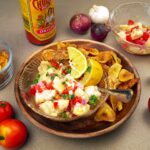
Print Recipe
Scallop ceviche
Our Scallop Ceviche is a tribute to Peru’s versatile seafood legacy. Easy to prepare, with an unforgettable balance of sweet, spicy, and tangy flavors.
Servings: 2 people
Instructions
-
Chop the scallops into bite-sized pieces. Season with salt and pepper. Set aside.
-
Mix all the ingredients for the sauce: aji amarillo, pineapple or orange juice, and the lime juice.
-
In a large bowl, add the roughly diced or minced red onion, tomatoes, and garlic.
-
Add in the scallops and sauce. Make sure all the scallops are submerged in the sauce. Place in the fridge for 30 minutes to 2 hours if using fresh scallops.
-
Taste and add salt and pepper if needed. Discard the liquids before serving, garnish with parsley or cilantro—and serve with a side of your choice.

Peruvian foodie. I’ve been writing about the food of Peru for over 10 years. Read more about the Eat Peru team here


